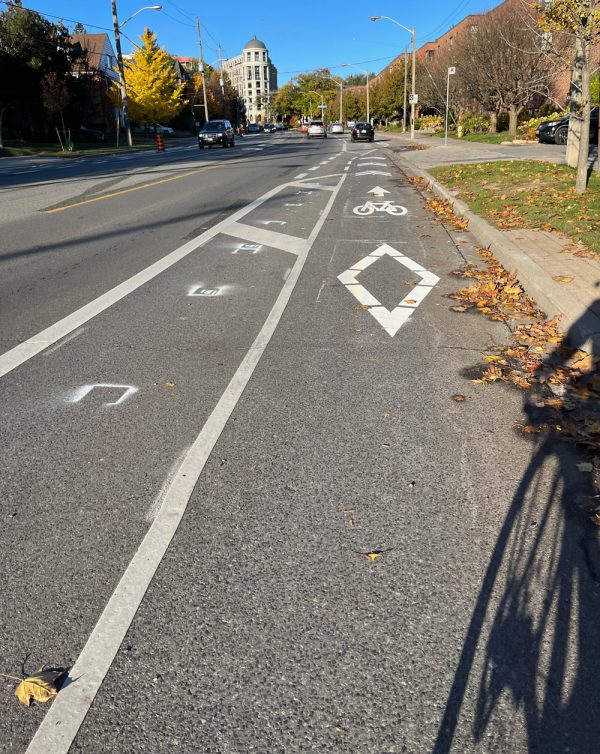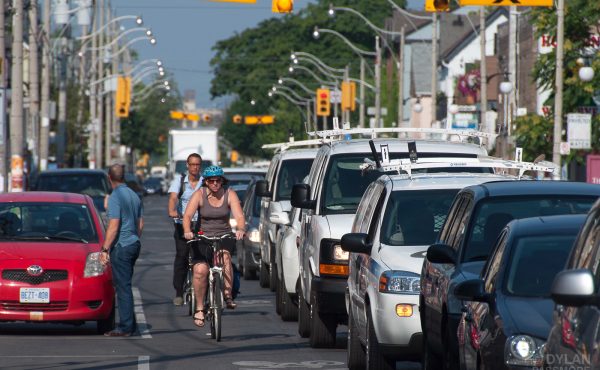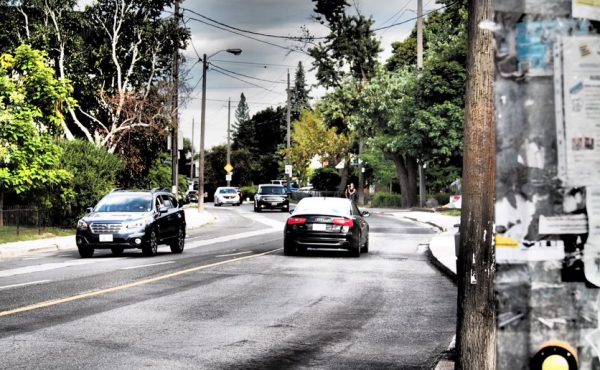Politicians and government bureaucrats love process. Let’s not rush to blame them, though, because there’s a lot to love.
Carrying out a series of planning meetings, collecting relevant data, conducting background analyses, and engaging with stakeholders gives the appearance of good project outcomes. It’s also a good way for a nervous leader or bureaucrat to deflect criticism: “We studied everything we could and asked everybody who might be affected and came up with a reasonable compromise”.
Often, though, process gets bogged down in its own elements, like a well-intentioned spider getting trapped in the intricacies of its own web. The management gurus call this “analysis paralysis” when too much thinking and too much searching for the perfect solution results in, well … just delay and more process.
That seems to be the point we’ve reached in Toronto, certainly when it comes to public safety and the use of our roadways. The need for safety for all is, officially, not in dispute. Toronto’s Vision Zero Road Safety Plan clearly articulates that “human life should be prioritized over all other objectives within all aspects of the transportation system.” The city’s Complete Streets Guidelines, say that “our streets reflect our city’s values,” while outlining measures to safely accommodate all road users.
Yet it often seems that safety is compromised if it might inconvenience a minority of people. Take, for example, the issue of the installation of Complete Streets projects in the city. These have been proven repeatedly in multiple jurisdictions to save lives, reduce injuries, and make a city safer for everyone: pedestrians, cyclists, and yes, even motorists.
Despite that, a recent public meeting in Etobicoke was held by the local Councillor ostensibly to consult with citizens about the city’s medium and long-range proposals to “study, build, and upgrade” bikeways. Once the meeting began, however, it quickly became clear why most people were attending: to vent their anger and opposition to bikeways “recently installed, underway, or planned for installation in 2024”, in particular the Bloor Street West Complete Streets project.
The tone was ugly, city staff were jeered and heckled for offering their considered professional opinions, and the issue of safety was routinely ignored by audience members who wanted to concentrate on nuisances to their motorized way of life.
There have been similar incidents elsewhere in Toronto. When Complete Streets and cycling infrastructure are discussed at public meetings, it is often less about how to make a road safe and more about whether it should be made safe at all. This is appalling: in any democracy, the fundamental rights of people to be safe are not subject to the whims of whomever can shout the loudest or drum up the angriest opponents. Safety must not take a back seat. It is not a candidate in a popularity contest.
Happily, there is another, better way which other cities have adopted. Toronto City Council could institute a process whereby it approves staff Complete Street plans (after study, public consultation, and careful design) and then delegates installation decisions to city staff. The staff would then still seek public input about particular installation elements such as locating business loading zones, accommodating persons with disabilities, and preventing motor traffic infiltration onto side streets.
We already do this in other areas where safety is the foremost concern. We don’t, for instance, hold public meetings to decide where to put a traffic light or which crosswalks to install.
Additionally, the city should undertake a comprehensive public education campaign to remind citizens about the importance of road safety, for everyone, and the need to consider road safety as requiring constant vigilance and improvement.
Change is hard, but a more streamlined, less exhausting process to initiate, study, explain, and implement transportation safety improvements is long overdue. Decisions about improving road safety should not be subject to repeated questioning and delay. Safety should always come first, not just for all citizens of Toronto but for the long-term livability and sustainability of any city.
Roger Morier (We Belong on Bloor) and Jonathan Schmidt (Toronto East Cyclists) are road safety advocates and members of the Steering Committee of Community Bikeways.
Photo: Jun Nogami, Biking in a Big City





5 comments
Thanks for your article. I was at the Etobicoke meeting too, and was appalled. Coincidentally, I attended a completely different and entirely positive public consultation a few days later about the Oakwood Village Streets Plan where everyone was engaged and civil, and made positive and informed suggestions about safety. Perhaps the City should always use the more inclusive approach of addressing ALL USERS of streets instead of one focused only on cycling–especially where resistance to cycling can be anticipated.
I too noticed that pedestrian safety was never mentioned, especially in light of all the wheeled and powered traffic now allowed on sidewalks. Perhaps if the bike community started advocating for pedestrian safety — that bikes/foot-scooters/e-bikes being on a sidewalk is a huge danger to pedestrians so wheeled transport need to be in their own lanes – you would be better paid attention to by the decision makers. Lead by example for your community.
Jay L. – pedestrian safety was expressly mentioned and there are references to “safety for all” which includes pedestrians. The “biking community” has always advocated for safety for others, i.e. pedestrians. With fewer delays in the overall approval process for Complete Streets, you would see more cyclists in more bike lanes and fewer on sidewalks. That is what leading by example looks like.
Ironically, I like directly across the street from where the photo was taken – right on Bloor. I, too was at the Holyday Debacle. When one “questioner” (ostensibly the floor was open to questions; they were really long-winded anti-complete street rants) said he would run over any bikes in his way along The Queensway, I almost walked out. Two observations: (1) Despite this vocal NIMBY group, the majority of citizens support complete streets. Polls show it, and my discussions with neighbours confirms it. (2) I’m 67, and for goodness sake, I felt like most of the NIMBYs were older than me. While they are a moneyed, politcally-connected group that cannot be ignored, I think the younger generation will be much more accepting, indeed encouraging, of these sorts of public safety initiatives.
One more quick comment: Easter Sunday 2024 was beautiful and sunny. My partner and I took a walk up to Bloor West Village, which was filled with pedestrians. Even better, the number of bikes using the bike lanes was incredible. There is reason to be optimistic! 🙂